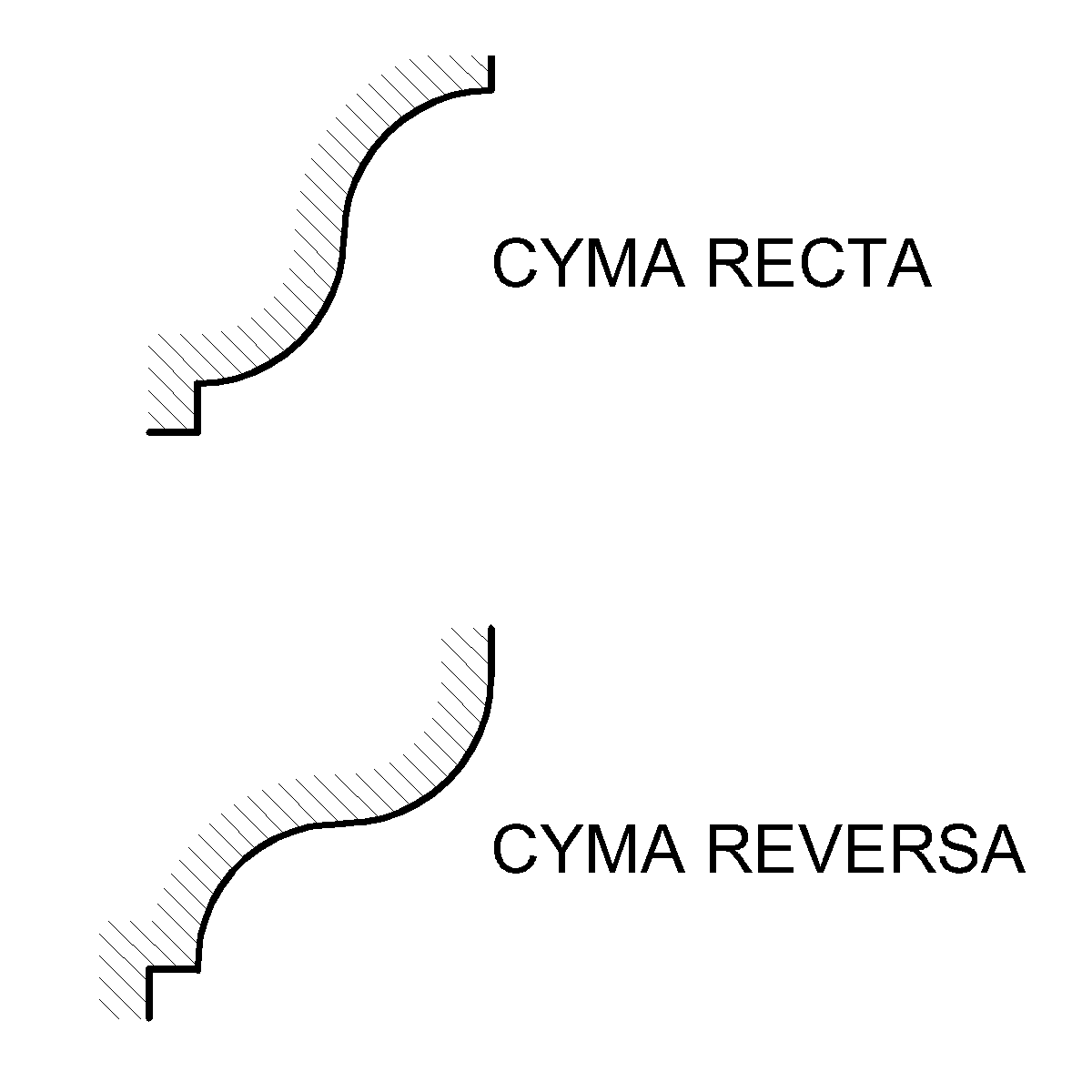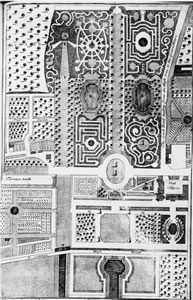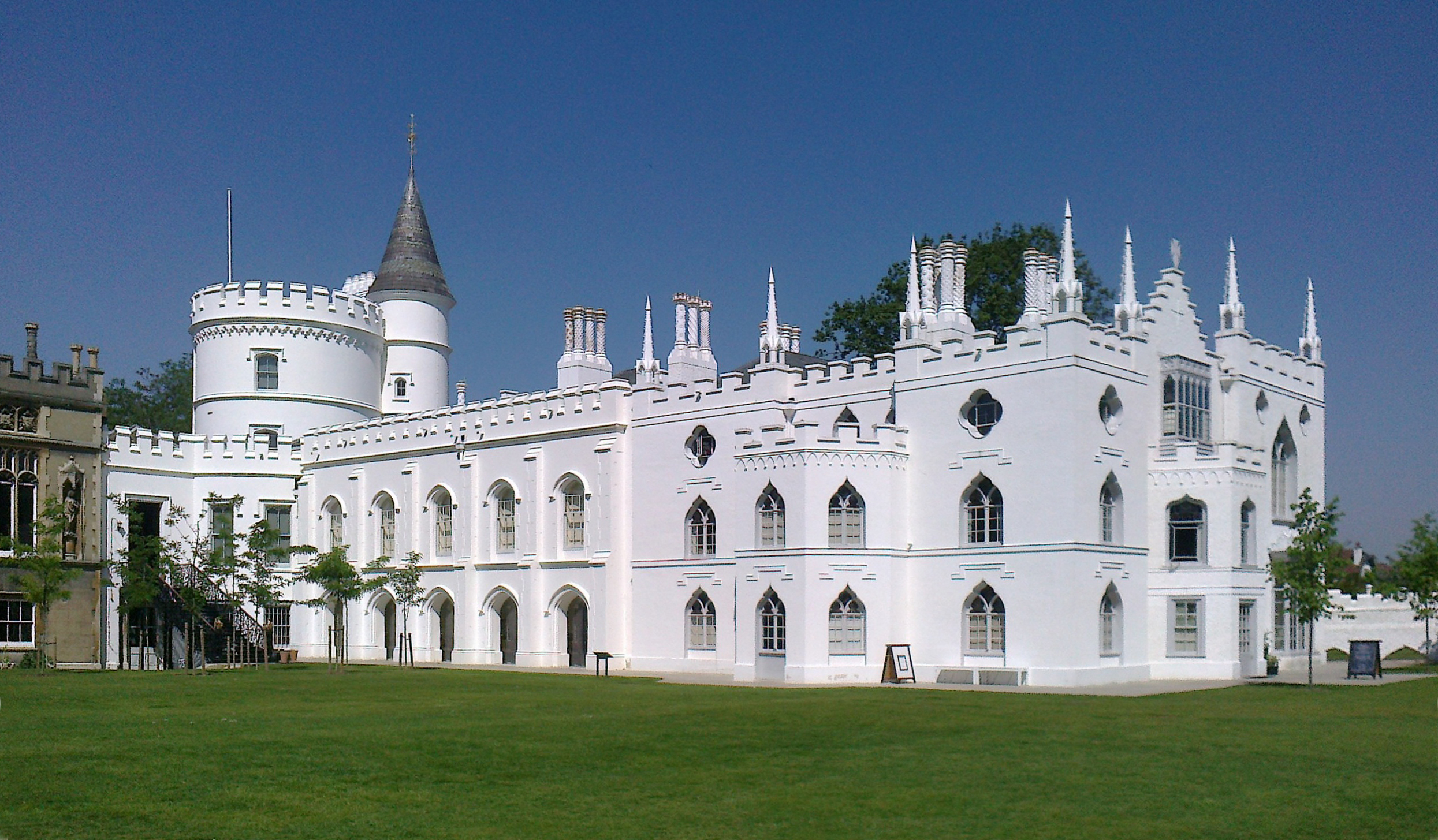|
St John's Church, Shobdon
The Church of St John is a Church of England parish church at Shobdon in the English county of Herefordshire. Of 14th century origins, the church was completely rebuilt between 1749 and 1752 for John Bateman, 2nd Viscount Bateman, in a Rococo style under the supervision of Bateman's uncle, The Honourable Richard Bateman, a close friend of Horace Walpole, and a member of his ''Committee of Taste.'' Simon Jenkins, in his book ''England's Thousand Best Churches'', considers the interior "a complete masterpiece (of) English Rococo," while Brooks and Pevsner describe it as "the finest 18th century church in Herefordshire." It is a Grade I listed building. History The original church was probably constructed in the 14th century. Arches from the interior of this building were removed in the 18th century to form an eye-catcher in the grounds of Shobdon Court, the Bateman family home. The Shobdon Arches, as they are known, have subsequently "weathered disastrously." Between 1749 and 1 ... [...More Info...] [...Related Items...] OR: [Wikipedia] [Google] [Baidu] |
Shobdon
Shobdon is a village and civil parish in Herefordshire, England, about 15 miles north of Hereford, six miles west of Leominster, and 2 miles southwest of the Mortimer's Cross. According to the 2001 census, the parish population was 769, consisting of 386 males and 383 females. The population had increased to 816 by the time of the 2011 census. The parish includes the hamlets of Hanbury Green, Uphampton, Easthampton and Ledicot. History In the 17th century the manor of Shobdon was owned by the Bateman family, who lived at Shobdon Court, constructed c1710 and remodelled in 1861. The Bateman Arms pub is named after them. Shobdon church is St John the Evangelist, north of the village. It has a direct connection to Horace Walpole's Strawberry Hill in Twickenham and the members of the "Committee of Taste" which strongly influenced its design. Its intact interior and matching furniture are the sole example of this Walpolean Gothick style of Georgian church architecture and furn ... [...More Info...] [...Related Items...] OR: [Wikipedia] [Google] [Baidu] |
John Vardy
John Vardy (February 1718 – 17 May 1765) was an English architect attached to the Royal Office of Works from 1736. He was a close follower of the neo-Palladian architect William Kent. John Vardy was born to a simple working family in Durham. His early training is obscure. His career at the Office of Works, which demanded most of his attention throughout his life, began in May 1736, when he was appointed Clerk of the Works at Greenwich Hospital. He was Clerk of the Works at Hampton Court Palace, January 1745 to 1746; Clerk of the Works at Whitehall, Palace of Westminster and St James's Palace, December 1746 to 1754; Kensington Palace, July 1754 to 1761. He also served as Clerk of the Works at Chelsea Hospital and as Surveyor to the Mint. Vardy and William Kent His relations with William Kent, his senior at the Board of Works, began around 1736 and remained close. Vardy prepared for publication the classic of the Palladian revival, ''Some Designs of Mr. Inigo Jones and Mr. Wil ... [...More Info...] [...Related Items...] OR: [Wikipedia] [Google] [Baidu] |
Scheduled Monument
In the United Kingdom, a scheduled monument is a nationally important archaeological site or historic building, given protection against unauthorised change. The various pieces of legislation that legally protect heritage assets from damage, visual disturbance, and destruction are grouped under the term "Designation (heritage assets), designation". The protection provided to scheduled monuments is given under the Ancient Monuments and Archaeological Areas Act 1979, which is a different law from that used for listed buildings (which fall within the town and country planning system). A heritage asset is a part of the historic environment that is valued because of its historic, archaeological, architectural or artistic interest. Only some of these are judged to be important enough to have extra legal protection through designation. There are about 20,000 scheduled monuments in England representing about 37,000 heritage assets. Of the tens of thousands of scheduled monuments in the UK ... [...More Info...] [...Related Items...] OR: [Wikipedia] [Google] [Baidu] |
Listed Building
In the United Kingdom, a listed building is a structure of particular architectural or historic interest deserving of special protection. Such buildings are placed on one of the four statutory lists maintained by Historic England in England, Historic Environment Scotland in Scotland, in Wales, and the Historic Environment Division of the Department for Communities in Northern Ireland. The classification schemes differ between England and Wales, Scotland, and Northern Ireland (see sections below). The term has also been used in the Republic of Ireland, where buildings are protected under the Planning and Development Act 2000, although the statutory term in Ireland is "Record of Protected Structures, protected structure". A listed building may not be demolished, extended, or altered without permission from the local planning authority, which typically consults the relevant central government agency. In England and Wales, a national amenity society must be notified of any work to ... [...More Info...] [...Related Items...] OR: [Wikipedia] [Google] [Baidu] |
Chinoiserie
(, ; loanword from French '' chinoiserie'', from '' chinois'', "Chinese"; ) is the European interpretation and imitation of Chinese and other Sinosphere artistic traditions, especially in the decorative arts, garden design, architecture, literature, theatre, and music. The aesthetic of chinoiserie has been expressed in different ways depending on the region. It is related to the broader current of Orientalism, which studied Far East cultures from a historical, philological, anthropological, philosophical, and religious point of view. First appearing in the 17th century, this trend was popularized in the 18th century due to the rise in trade with China (during the High Qing era) and the rest of East Asia. As a style, chinoiserie is related to the Rococo style. Both styles are characterized by exuberant decoration, asymmetry, a focus on materials, and stylized nature and subject matter that focuses on leisure and pleasure. Chinoiserie focuses on subjects that were thought by Eu ... [...More Info...] [...Related Items...] OR: [Wikipedia] [Google] [Baidu] |
Gothic Revival Architecture
Gothic Revival (also referred to as Victorian Gothic or neo-Gothic) is an Architectural style, architectural movement that after a gradual build-up beginning in the second half of the 17th century became a widespread movement in the first half of the 19th century, mostly in England. Increasingly serious and learned admirers sought to revive medieval Gothic architecture, intending to complement or even supersede the Neoclassical architecture, neoclassical styles prevalent at the time. Gothic Revival draws upon features of medieval examples, including decorative patterns, finials, lancet windows, and hood moulds. By the middle of the 19th century, Gothic Revival had become the pre-eminent architectural style in the Western world, only to begin to fall out of fashion in the 1880s and early 1890s. For some in England, the Gothic Revival movement had roots that were intertwined with philosophical movements associated with Catholicism and a re-awakening of high church or Anglo-Cathol ... [...More Info...] [...Related Items...] OR: [Wikipedia] [Google] [Baidu] |
Ogee
An ogee ( ) is an object, element, or curve—often seen in architecture and building trades—that has a serpentine- or extended S-shape (Sigmoid curve, sigmoid). Ogees consist of a "double curve", the combination of two semicircle, semicircular curves or arc (geometry), arcs that, as a result of a inflection point, point of inflection from concave function, concave to convex function, convex or ''vice versa'', have ends of the overall curve that point in opposite directions (and have tangents that are approximately parallel). First seen in textiles in the 12th century, the use of ogee elements—in particular, in the design of arches—has been said to characterise various Gothic architecture, Gothic and Gothic Revival architecture, Gothic Revival architectural styles. The shape has many such uses in architecture from those periods to the present day, including in the ogee arch in these architectural styles, where two ogees oriented as mirror images compose the sides of the ar ... [...More Info...] [...Related Items...] OR: [Wikipedia] [Google] [Baidu] |
Chancel
In church architecture, the chancel is the space around the altar, including the Choir (architecture), choir and the sanctuary (sometimes called the presbytery), at the liturgical east end of a traditional Christian church building. It may terminate in an apse. Overview The chancel is generally the area used by the clergy and choir during worship, while the congregation is in the nave. Direct access may be provided by a priest's door, usually on the south side of the church. This is one definition, sometimes called the "strict" one; in practice in churches where the eastern end contains other elements such as an ambulatory and side chapels, these are also often counted as part of the chancel, especially when discussing architecture. In smaller churches, where the altar is backed by the outside east wall and there is no distinct choir, the chancel and sanctuary may be the same area. In churches with a retroquire area behind the altar, this may only be included in the broader defi ... [...More Info...] [...Related Items...] OR: [Wikipedia] [Google] [Baidu] |
Transepts
A transept (with two semitransepts) is a transverse part of any building, which lies across the main body of the building. In cruciform ("cross-shaped") churches, in particular within the Romanesque and Gothic Christian church architectural traditions, a transept is an area set crosswise to the nave. Each half of a transept is known as a semitransept. Description The transept of a church separates the nave from the sanctuary, apse, choir, chevet, presbytery, or chancel. The transepts cross the nave at the crossing, which belongs equally to the main nave axis and to the transept. Upon its four piers, the crossing may support a spire (e.g., Salisbury Cathedral), a central tower (e.g., Gloucester Cathedral) or a crossing dome (e.g., St Paul's Cathedral). Since the altar is usually located at the east end of a church, a transept extends to the north and south. The north and south end walls often hold decorated windows of stained glass, such as rose windows, in stone tra ... [...More Info...] [...Related Items...] OR: [Wikipedia] [Google] [Baidu] |
Nave
The nave () is the central part of a church, stretching from the (normally western) main entrance or rear wall, to the transepts, or in a church without transepts, to the chancel. When a church contains side aisles, as in a basilica-type building, the strict definition of the term "nave" is restricted to the central aisle. In a broader, more colloquial sense, the nave includes all areas available for the lay worshippers, including the side-aisles and transepts.Cram, Ralph Adams Nave The Catholic Encyclopedia. Vol. 10. New York: Robert Appleton Company, 1911. Accessed 13 July 2018 Either way, the nave is distinct from the area reserved for the choir and clergy. Description The nave extends from the entry—which may have a separate vestibule (the narthex)—to the chancel and may be flanked by lower side-aisles separated from the nave by an arcade. If the aisles are high and of a width comparable to the central nave, the structure is sometimes said to have three nave ... [...More Info...] [...Related Items...] OR: [Wikipedia] [Google] [Baidu] |
Batty Langley
Batty Langley (''baptised'' 14 September 1696 – 3 March 1751) was an English garden designer, and prolific writer who produced a number of engraved designs for " Gothick" structures, summerhouses and garden seats in the years before the mid-18th century. An eccentric landscape designer, he gave four of his sons the names Hiram, Euclid, Vitruvius and Archimedes. He published extensively, and attempted to "improve" Gothic forms by giving them classical proportions. Early life Langley was baptised in Twickenham, Middlesex, the son of a jobbing gardener Daniel Langley and his wife Elizabeth. He bore the name of David Batty, one of his father's patrons. He started worked as a gardener, inheriting some of his father's clients in Twickenham, then a village of suburban villas within easy reach of London by a pleasant water journey on the Thames. An early client was Thomas Vernon of Twickenham Park. He married Anne Smith in February 1719. They had four children, but she died ... [...More Info...] [...Related Items...] OR: [Wikipedia] [Google] [Baidu] |
Strawberry Hill House
Strawberry Hill House—often called simply Strawberry Hill—is a Gothic Revival architecture, Gothic Revival villa that was built in Twickenham, London, by Horace Walpole (1717–1797) from 1749 onward. It is a typical example of the "#Strawberry Hill Gothic, Strawberry Hill Gothic" style of architecture, and it prefigured the nineteenth-century Gothic Revival. Walpole rebuilt the existing house in stages starting in 1749, 1760, 1772 and 1776. These added Gothic features such as towers and battlements outside and elaborate decoration inside to create "gloomth" to suit Walpole's collection of antiquarian objects, contrasting with the more cheerful or "riant" garden. The interior included a Robert Adam fireplace; parts of the exterior were designed by James Essex. The garden contained a large seat shaped like a Rococo sea shell, which was recreated during the 2012 restoration of the garden, one of the many examples of historic garden conservation in the UK. Under Horace Walpole ... [...More Info...] [...Related Items...] OR: [Wikipedia] [Google] [Baidu] |






